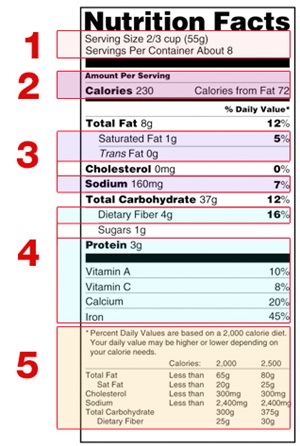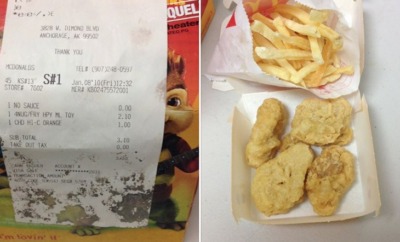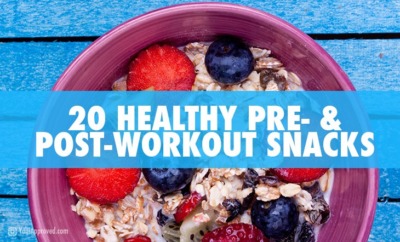How to Read Food Labels Like a Pro + 6 Ingredients You Should Avoid

Making more nutritious food choices, cutting back on your favorite treats, and deciding to fully commit to living your healthiest lifestyle is already an enormous challenge in itself. Then, when the food industry makes it that much more difficult for us to make these healthy choices, it feels like all efforts are futile.
By labeling product packaging with misleading information, overcomplicating nutrition labels, and throwing in ingredients you’ve never heard of that you can’t even pronounce, you could start to feel defeated.
“It all comes back to what you eat, what you drink, and what you think!” – Kris Carr
That’s where we come in! We’re here to help you learn how to read confusing food labels like a BOSS, and also to share six common harmful ingredients you should avoid.
Beware of Misleading Packaging
Processed foods are typically known to be calorically dense, loaded with chemicals, or packed full of sugar. In an attempt to sometimes camouflage this, food companies will often advertise misleading information on the front of the package to distract you from the truths that are really being told on the back of the package.
Here are 5 Misleading Labels and What They Really Mean
“Organic”
A label that reads “USDA Organic” contains 95% or more of ingredients which are grown and processed without synthetic fertilizers or pesticides.
A label that reads “Made with Organic Ingredients” contains a minimum of 70% of ingredients which meet the standard mentioned above.
For more help on “Organic”, “Natural, and “Non GMO” products, labeling, and information, check out this article!
“Light” or “Lite”
A product with “Light” or “Lite” labeling would appear to be in reference to components such as fat content, fewer calories, etc. However, food manufacturers are known to use this term in relation to misleading factors, such a flavoring.
“Sugar-Free”
A product labeled as “Sugar-Free” simply means they have opted out of adding standard table sugar to the product. However, this also usually means some kind of artificial sweetener, such as sucralose or aspartame, or even carbohydrates such as maltodextrin were added in its place.
“Zero Grams Trans Fat”
Manufacturers are legally allowed to label their products as having “no trans fat” as long as it contains less than .5 grams of trans fat per serving. However, because we’re known to eat more than one serving at time, we could potentially end up consuming excessive amounts of these harmful trans fats.
“Fat-Free”
While a product may be labeled “Fat-Free,” it certainly does not mean the product is free of calories, carbohydrates, or preservatives. Instead, what the product lacks in fats, it makes up for in things like sugar and other unhealthy additives.
As with Trans Fats, manufacturers are allowed to use this labeling as long as their product contains less than .5 grams of fat per serving. Again, because we tend to consume more than one serving during a single sitting, the portion of that food we eat does not wind up being actually free of fat.
How to Read Food Labels
There’s heaps of information packed into that little rectangle on the packages of food we consume every day, but what does it all mean? To help break it down, The American Heart Association has provided the following example to help explain the contents included on the Nutrition Facts label.

1. Serving Size
Section 1 provides the serving size at the top of the label, telling you how much a single serving contains and how many servings are in the entire package.
2. Calories Per Serving
Section 2 provides the calories per serving only, so be sure to pay close attention to the number for servings you’re consuming. For example, 3 servings = 3x the calories per serving.
3. Keep These Nutrients Limited
Section 3 provides Fat, Cholesterol, and Sodium nutrition information. The amounts of saturated fat and sodium you intake should be limited, and trans fats should be completely avoided.
4. Get Enough of These Nutrients
Section 4 provides the nutrition information for dietary fiber, protein, Vitamins A and B, calcium, and iron. These are all nutrients you should strive to consume enough of every day.
5. Daily Percentages
Section 5 provides the percentage of each nutrient in a single serving in regards to the daily recommended amount. As a guide, if you would like to consume less of a nutrient, such as sodium, choose foods with 5 percent or less % Daily Value. If you want to consume more of a nutrient, such as fiber, choose foods with 20% or more % DV.
6 of the Worst Food Ingredients You Should Definitely Avoid
Preservatives, sweeteners, chemicals, flavor enhancers, artificial colors, and more are all recurring ingredients being added into many commonly consumed food and beverages.
According to the Food and Drug Administration, there are more than 3,000 total substances including administrative, chemical, and toxicological properties currently being added into foods within the United States.
While trying to memorize all of these additives is undoubtedly attainable, memorizing six of some of the most harmful ones its most certainly worth it.
1. Monosodium Glutamate (MSG)
Found in an estimated 80% of processed foods, MSG is one of the most dangerous additives; known to cause reactions such as rashes, headaches, irritability, IBS, heart palpitations, and depression. Also a known carcinogen and killer of brain cells which may be linked to the development of cardiac and/or kidney problems, neurological disorders, Alzheimer’s Disease, Parkinson’s Disease and more.
Also commonly known as: soy protein isolate, whey protein isolate, yeast extract, calcium caseinate, sodium caseinate, anything “hydrolyzed”, and more.
Commonly found in: flavored salty snack foods, deli meats, salad dressings and dips, canned soups, fried meats, Chinese food dishes.
2. High-Fructose Corn Syrup
High-Fructose Corn Syrup is extracted and heavily processed through a chemical enzymatic process which causes it to absorb into our bloodstream at a faster rate. The result is a high risk of obesity and disease, even when consumed in pharmacologic doses.
HFCS is also known to contain contaminants, including mercury, which are unregulated and unmeasured by the FDA.
Commonly found in: soda, candy, juice, frozen snacks and dinners, breakfast cereals, store bought baked goods, granola bars.
3. Artificial Sweeteners
Artificial sweeteners such as aspartame and sucralose are most commonly known to cause headaches, migraines, and mood swings. While these may still seem like good “zero calorie” options to the common dieter, in reality, they happen to be one of the worst ingredients for your metabolic health.
In a study conducted by Dr. Sabyasachi Sen, of George Washington University, he found the metabolic dysregulation caused by artificial sweeteners to result in a higher production of fat cells due to the allowance of excess glucose entering the cells.
Also commonly known as: saccharin, acesulfame potassium (ACE K), neotame, and advantame.
Commonly found in: “diet” sodas or sports drinks, “0 calorie” sweetened beverages, “sugar-free” products, light yogurt, protein powders, protein bars.
4. Hydrogenated Oil
The stuff that keeps your beloved peanut butter from being a soupy mess (Heartbreaking, I know . . . but no worries, natural peanut butter is a super easy swap!), Hydrogenated Oil, or hydrogenated polyunsaturated fats, increase your risk of cancer and heart disease due to the trans fats contained in these oils.
Also commonly known as: partially hydrogenated oil or fractionated oil.
Commonly found in: nut butters, margarine, shortening, packaged snacks, store bought baked goods, ready-made doughs, fried foods.
5. Soy
Soy, particularly when added into processed foods, is so genetically modified that it receives substances of the herbicide glyphosate (the main ingredient in Roundup Weedkiller). Due to all the genetic engineering, excessive levels of this harmful herbicide are appearing in large amounts of our consumable goods.
This glyphosate has been shown to induce DNA and chromosomal damage, and has also been declared “probably carcinogenic to humans” by The Working Group of the World Health Organization.
Commonly found in: breads, breakfast cereals, crackers, breaded foods, sauces, meal replacement products, imitation meat products.
6. Nitrites/Nitrates
Nitrates are naturally occurring compounds found in fruit, vegetables, and grains which turn into nitrites when touched by the tongue. These nitrites are beneficial in preventing gut bacteria if formed into nitric oxide, but can become harmful and carcinogenic if turned into nitrosamines.
The nitrates found in these foods resist forming into harmful nitrosamines due to the Vitamin C also found in these same foods, preventing the formation of the harmful compound.
Nitrates and Nitrites are added to cured meats to prevent bacteria and discoloration of the product, however, without the Vitamin C source present, the nitrites are more likely to form into these dangerous nitrosamines. This poses threats including cancer, Alzheimer’s, Diabetes, and “Blue Baby Syndrome.”
Also commonly known as: sodium nitrate and potassium nitrates.
Commonly found in: deli meats, cured meats.
The Takeaway
These ingredients and their backstories are a lot to remember. As an easy rule of thumb, follow this: if you don’t know what an ingredient is or you can’t pronounce it . . . avoid putting it into your body.
We all like to see the best in people (and their products), and always hope to trust what is being advertised to us and our families. However, to ultimately know the truth, it’s up to us to dig deeper and to read the “fine print” and know how to read food labels and ingredient lists. Take control, become knowledgeable, and truly understand what your food is made of.


This Month's Letter
From the Editor
Monthly motivation and food for
thought from our founder.































Comments